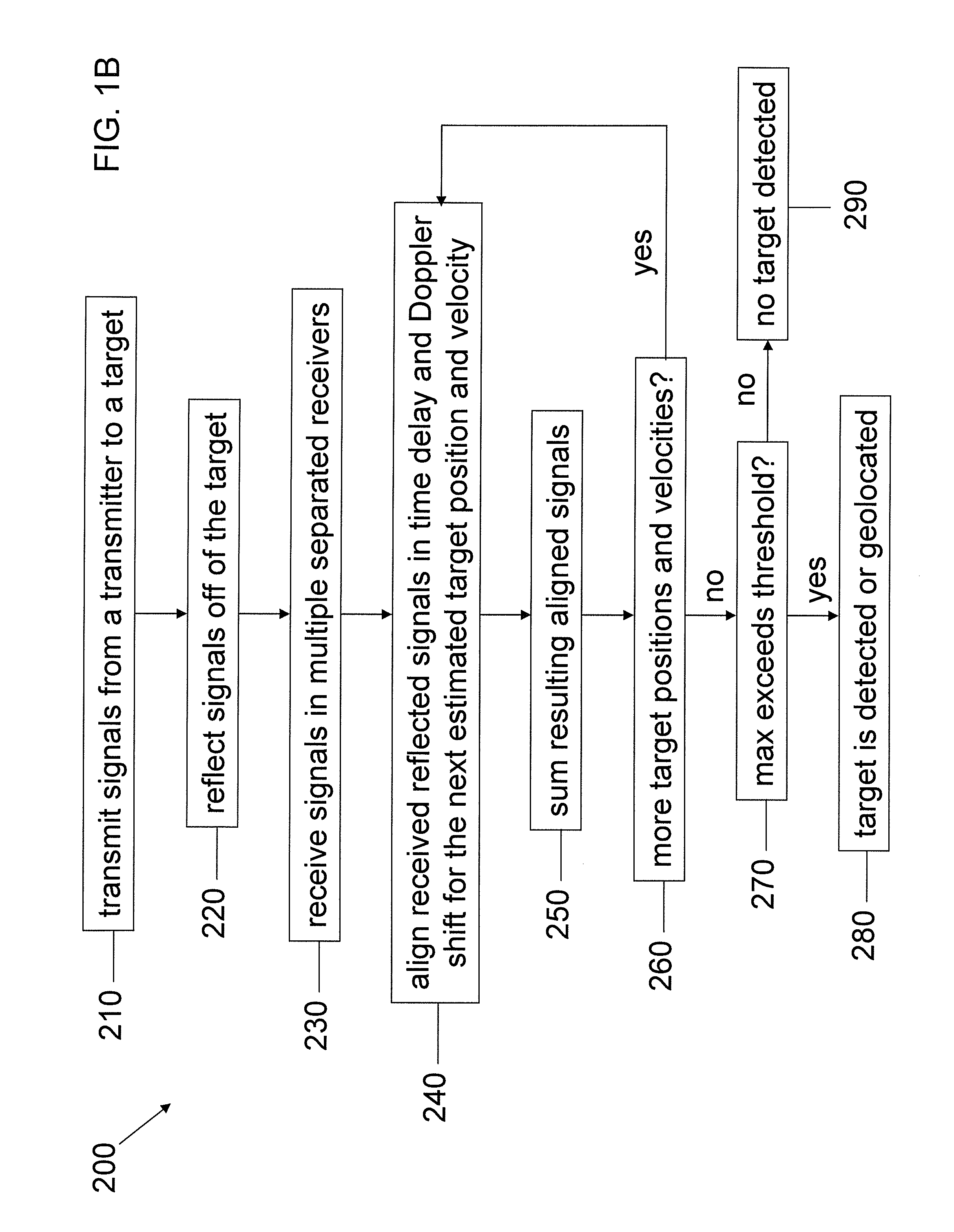Multistatic target detection and geolocation
a multi-static target and target technology, applied in the field of signal processing, can solve the problems of affecting the detection accuracy of targets, so as to improve the detection and geolocation accuracy of targets, and improve the effect of geolocation accuracy
- Summary
- Abstract
- Description
- Claims
- Application Information
AI Technical Summary
Benefits of technology
Problems solved by technology
Method used
Image
Examples
Embodiment Construction
[0058]Hereinafter, exemplary embodiments of the invention will be described in more detail with reference to the accompanying drawings. In the drawings, like reference numerals refer to like elements throughout.
[0059]A related problem is addressed in U.S. Pat. No. 6,747,593, entitled “Generalized Clutter Tuning for Bistatic Radar Systems,” the entire content of which is incorporated herein by reference.
[0060]FIG. 1A is a perspective view of a multistatic radar system in accordance with one embodiment of the invention. The system includes a number of radar sensors or receivers 10 positioned at multiple locations. In addition, there is (at least) one transmission source of radar signals. For example, the radar sensor labeled A can be a transmission source of the radar signals that are directed at potential targets (such as vehicles B). Each such radar receiver 10 receives a corresponding radar signal 20 reflected off potential targets and nearby clutter. In addition, a signal processo...
PUM
 Login to View More
Login to View More Abstract
Description
Claims
Application Information
 Login to View More
Login to View More - R&D
- Intellectual Property
- Life Sciences
- Materials
- Tech Scout
- Unparalleled Data Quality
- Higher Quality Content
- 60% Fewer Hallucinations
Browse by: Latest US Patents, China's latest patents, Technical Efficacy Thesaurus, Application Domain, Technology Topic, Popular Technical Reports.
© 2025 PatSnap. All rights reserved.Legal|Privacy policy|Modern Slavery Act Transparency Statement|Sitemap|About US| Contact US: help@patsnap.com



